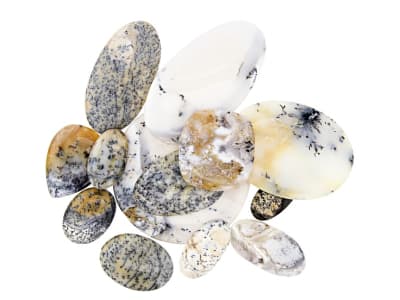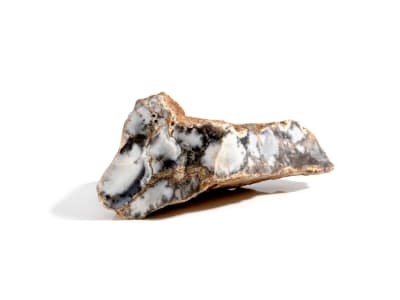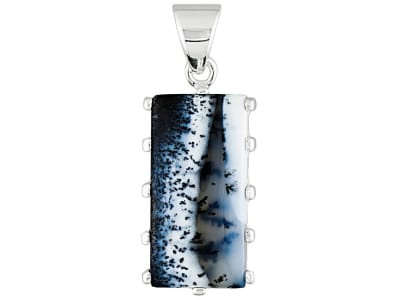This type of opal features dendrites, which are fern-like inclusions of iron, manganese, or other metallic oxides that create bold patterns within the gem. Typically, dendritic opals are cut into slices to best exhibit nature's artwork. As you might guess, these pieces are one-of-a-kind, as no two dendritic patterns are the same. Usually these opals are white, yellow, blue, green, or pink and show black inclusions well.
General Information
Common Name
Dendritic Opal
Species
Opal
Transparency
Translucent - Opaque
Dispersion
Strength: None
Refractive Index
1.370-1.520
Optic Character
NA
Polariscope Reaction
Singly Refractive (SR) With ADR, Aggregate (AGG)
Pleochroism
None
Hardness
5-6.5
Streak
White
Specific Gravity
1.980-2.500 Typical:2.150
Toughness
Varies
Inclusions
Dendritic opal has dendritic inclusions that look like moss or ferns. These inclusions are not plant fossils but are instead made of different metallic oxides, like manganese or iron.
Luster
Vitreous, Resinous
Fracture
Conchoidal, Uneven
Cleavage
None
Chemical Name
hydrated silicon dioxide
Chemical Formula
SiO2-nH2O
Crystal System
NA
Chemistry Classification
Silicate
Dendritic Opal Colors
-
 Bi-color
Bi-color -
 Multi-color
Multi-color -
 White
White
Countries of Origin
Unknown; United States of America; Australia; Ethiopia
Care
Normal Care


